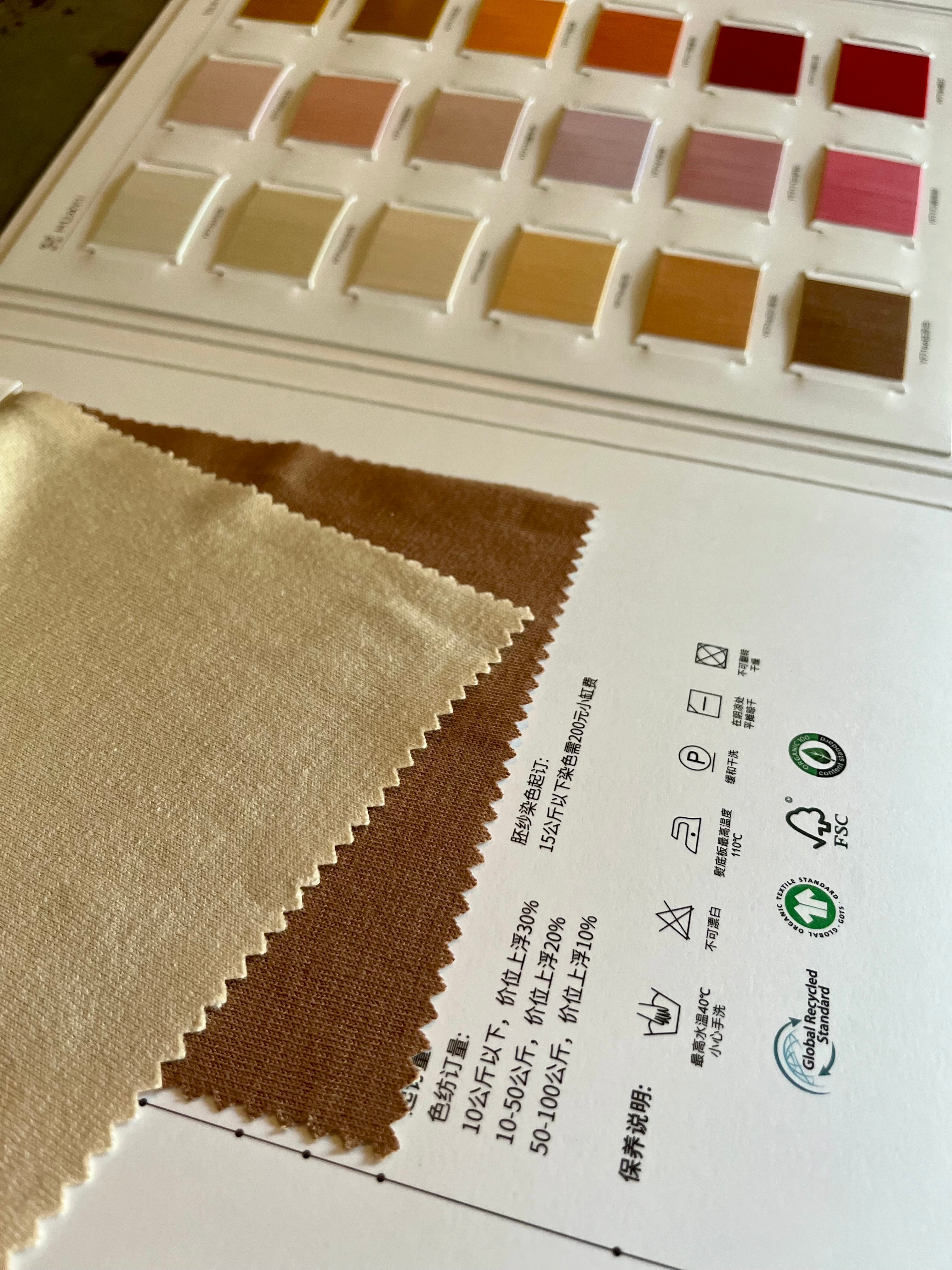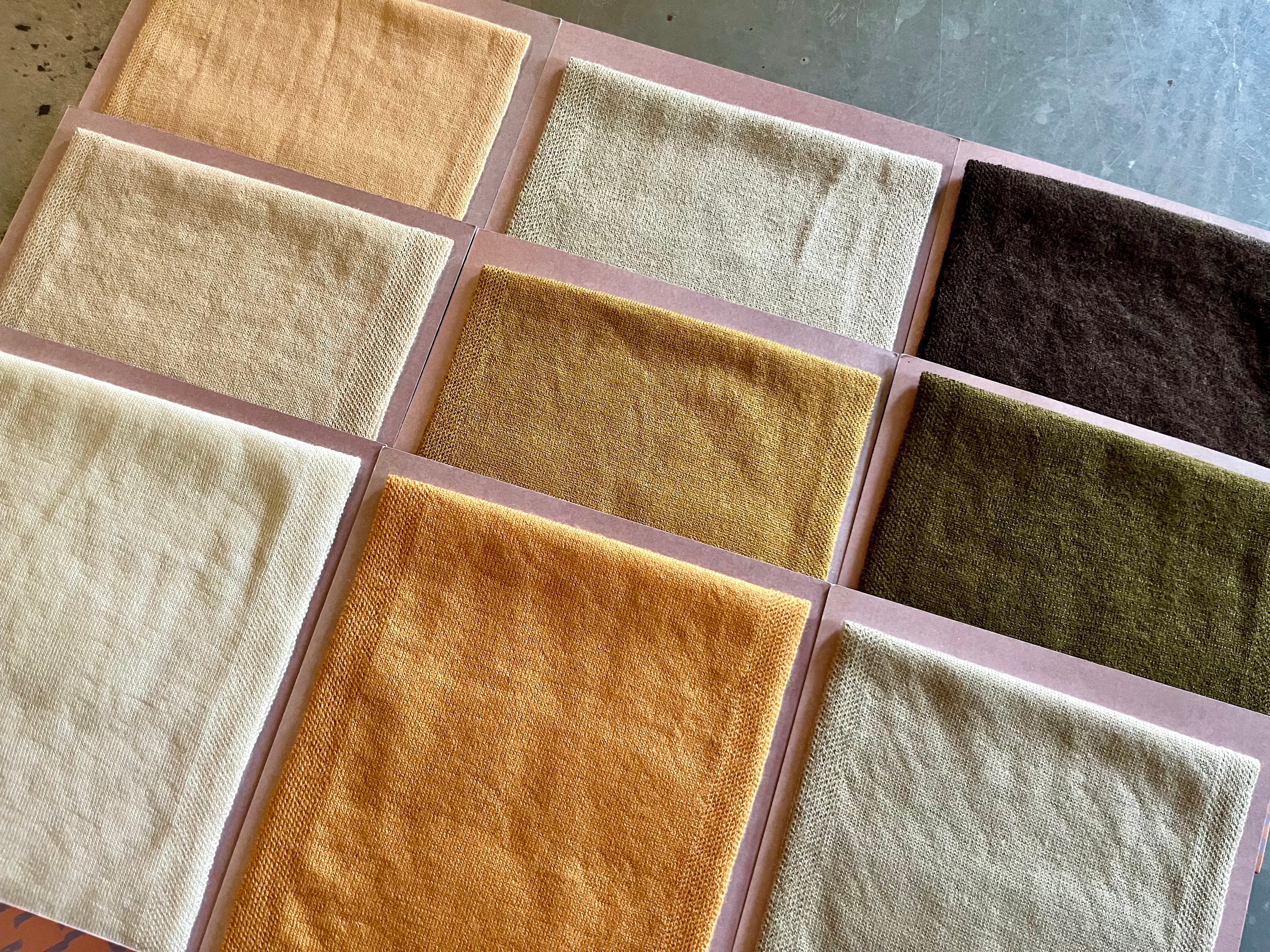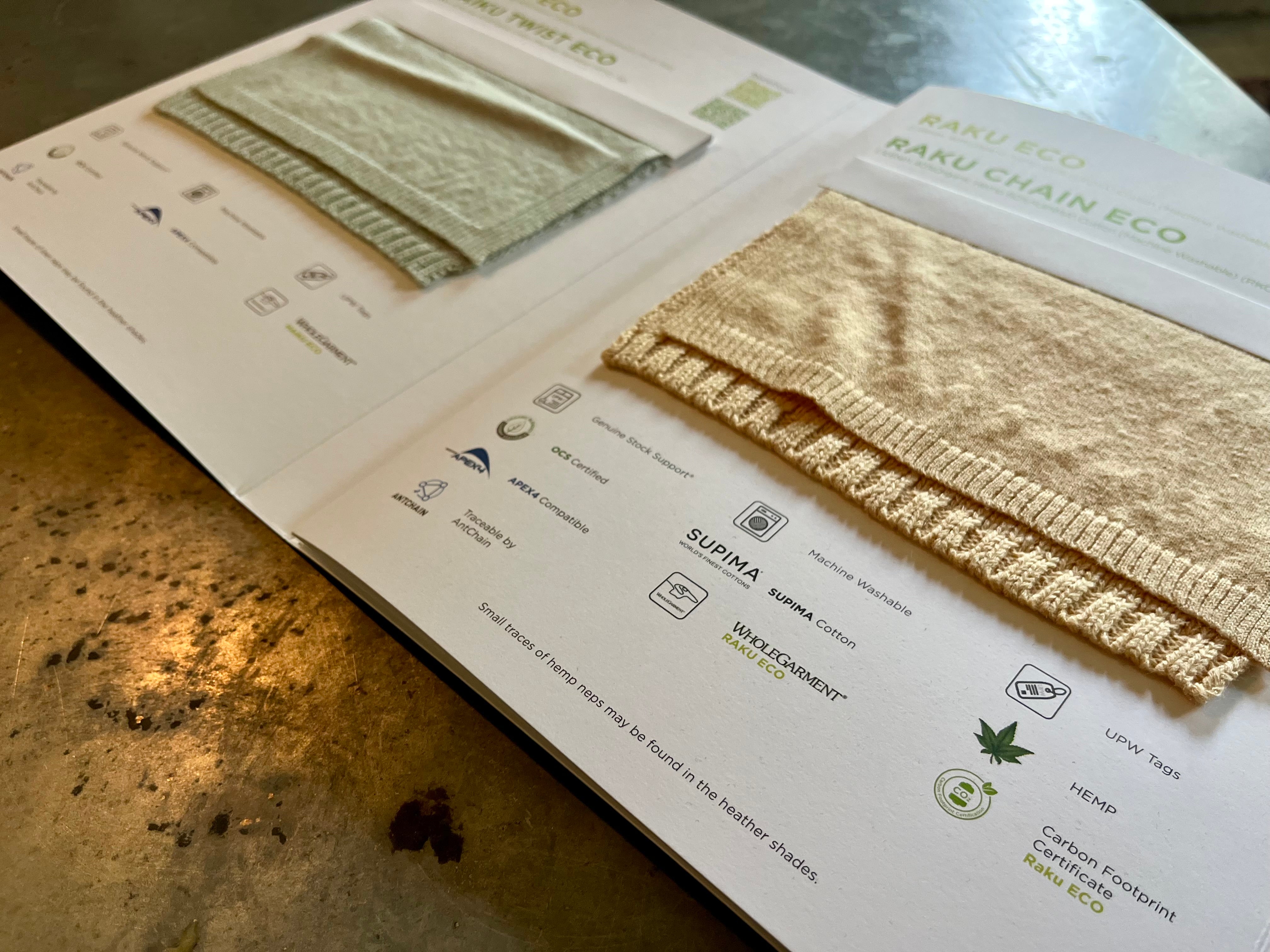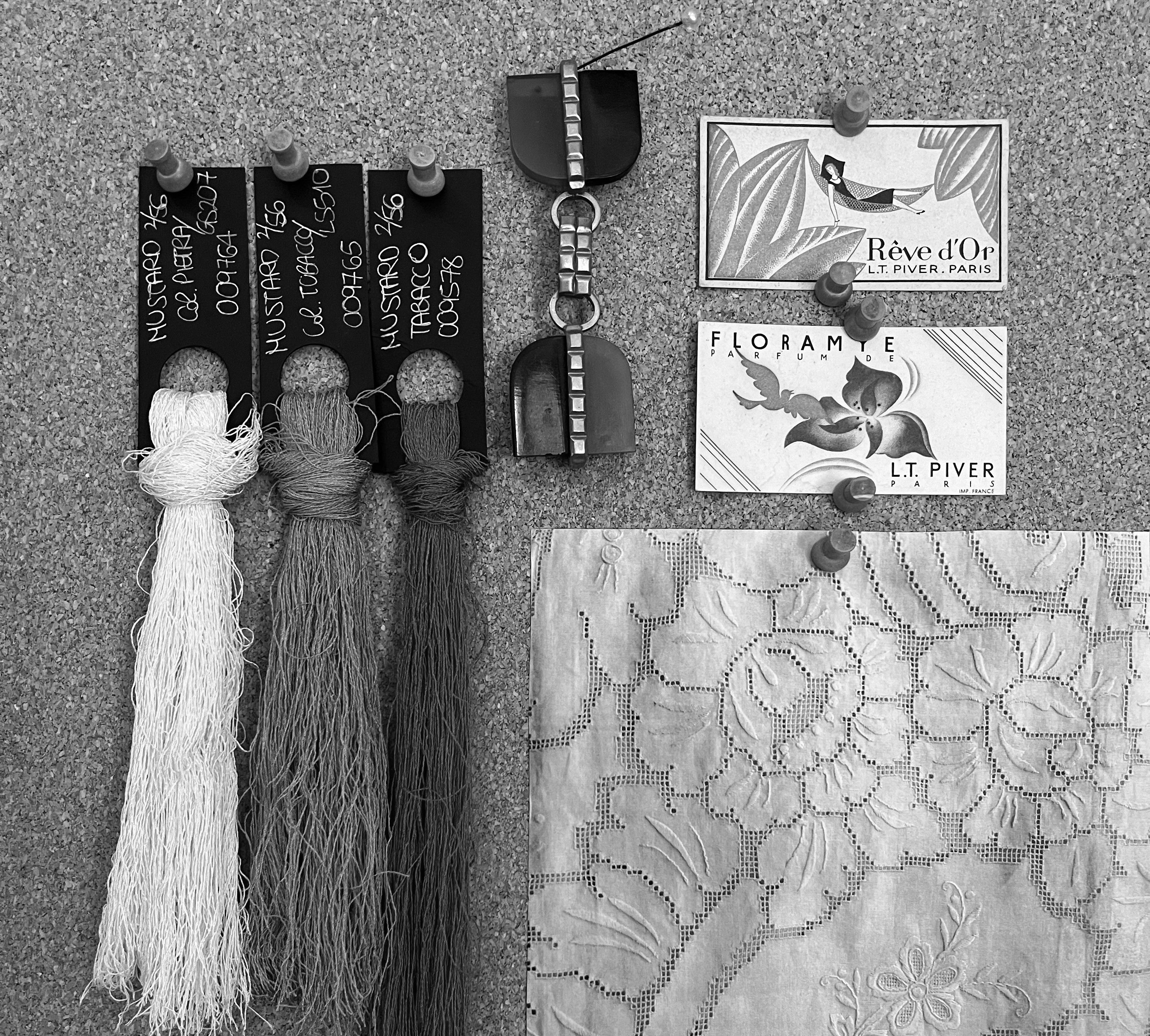Italian yarn for the launch collection
Although I had moved away from home for the manufacture, I wasn’t quite ready to move away from it for the raw materials. I had spent a fair bit of time sourcing yarn at Italian yarn fairs, and had found 2 particular suppliers that had just the right type of yarns for Combelle.

The plan
They used a fair bit of silk, and not only that, I discovered that their raw silk was coming from China anyway…so maybe I could purchase the yarn there directly?
Alas though, try as I might to find a way to cut out the air miles on the yarn, it soon became apparent that it had to be purchased where the mills were geographically located, and then sent onto China.
This did not seem especially sustainable as a supply chain set up. At this point I started looking into rail transport, as the carbon footprint of rail is only incrementally higher than the low levels of sea (for which I would never reach the minimums with my limited edition runs), and nowhere close to the high levels of air transportation.
I had already decided that the finished knitwear itself would travel to me by rail, so I supposed that I could plan to move the yarn by the same means- I just needed to factor in the extra journey time.
This was the plan. The real time unfolding of the process, however, was unfortunately to turn out quite differently.

The reality versus the dream
Without descending into details, I encountered issues with the sampling yarn, the lab dips, and then the bulk yarn itself. It cost us nearly two month’s time of our critical path at a time when we really couldn’t afford such delays.
It became clear that we had issues with our yarn mill, but added to that it had never sat quite right with me, all this moving around of materials and goods. It had become clear to me that the technical expertise and the cutting edge machinery that my kind of knitwear required was in China, so it was around that location that I needed to structure my supply chain, within the smallest geographical region possible.

Turning road blocks into opportunities
This decision was reached the same day that the yarn mill told me my order was going late by a month.
Within 24 hours I had spoken with Charing at the factory, she had told me about an upcoming yarn sourcing fair in Shanghai, and I had booked my flights. I had been reticent about sourcing my yarn in China as I feared that I would struggle to find sustainable accredited yarns- in fact, the quality & provenance of the raw materials was not something I was ever prepared to compromise on.
However…I was to be pleasantly surprised. More than 60% of the suppliers exhibiting were already focusing heavily on sustainable practices, and I was presented with a wealth of beautiful options. I was also doubly pleasantly surprised to meet the mill that had been supplying my yarn mill with raw materials, and to discover that they were located very close to my factory, just a little inland from Shanghai. Finally, the dots were starting to join themselves, and my neat, organised- and increasingly sustainable- supply chain was finally falling into place.

